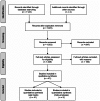The effects of winter recreation on alpine and subalpine fauna: a systematic review and meta-analysis
- PMID: 23691190
- PMCID: PMC3655029
- DOI: 10.1371/journal.pone.0064282
The effects of winter recreation on alpine and subalpine fauna: a systematic review and meta-analysis
Abstract
The ski industry is often perceived as having a negative impact on sensitive alpine and subalpine communities. However, empirical evidence of such impacts is lacking. We reviewed the available literature from the last 35 years to quantify the reported effects of winter recreation on faunal communities. Overall, using one-sample binomial tests ('sign tests') we found that the effects of all types of winter recreation-related disturbances (i.e. ski runs, resort infrastructure and winter tourism) were more likely to be negative or have no effect, than be positive for wildlife. More specifically, in Europe, where the majority of the available research was conducted, the impacts of winter recreation were most often negative for fauna. In terms of specific taxa, birds and to a lesser extent mammals and arthropods, responded negatively to disturbance. Results from our meta-analysis confirmed the results from our binomial tests. Richness, abundance and diversity of fauna were lower in areas affected by winter recreation when compared with undisturbed areas. For most regions and taxa, however, empirical evidence remains too limited to identify clear impacts of winter recreation. We therefore conclude that the majority of ski resorts are operating in the absence of knowledge needed to inform effective strategies for biodiversity conservation and ecologically-sound management. Thus, there is an urgent need for more empirical research to be conducted throughout this increasingly threatened ecological community, especially given the indication from the available literature that fauna often respond negatively to winter recreation.
Conflict of interest statement
Figures








References
-
- Caprio E, Chamberlain DE, Isaia M, Rolando A (2011) Landscape changes caused by high altitude ski-pistes affect bird species richness and distribution in the Alps. Biol Conserv 144: 2958–2967.
-
- Haslett JR (1997) Insect communities and the spatial complexity of mountain habitats. Glob Ecol Biogeogr Lett 6: 49–56.
-
- Negro M, Isaia M, Palestrini C, Schoenhofer A, Rolando A (2010) The impact of high-altitude ski pistes on ground-dwelling arthropods in the Alps. Biodivers Conserv 19: 1853–1870.
-
- Körner C, Paulsen J, Spehn EM (2011) A definition of mountains and their bioclimatic belts for global comparisons of biodiversity data. Alp Bot 121: 73–78.
-
- Löve D (1970) Subarctic and subalpine: Where and what? Arct Antarct Alp Res 2: 63–73.
Publication types
MeSH terms
LinkOut - more resources
Full Text Sources
Other Literature Sources

